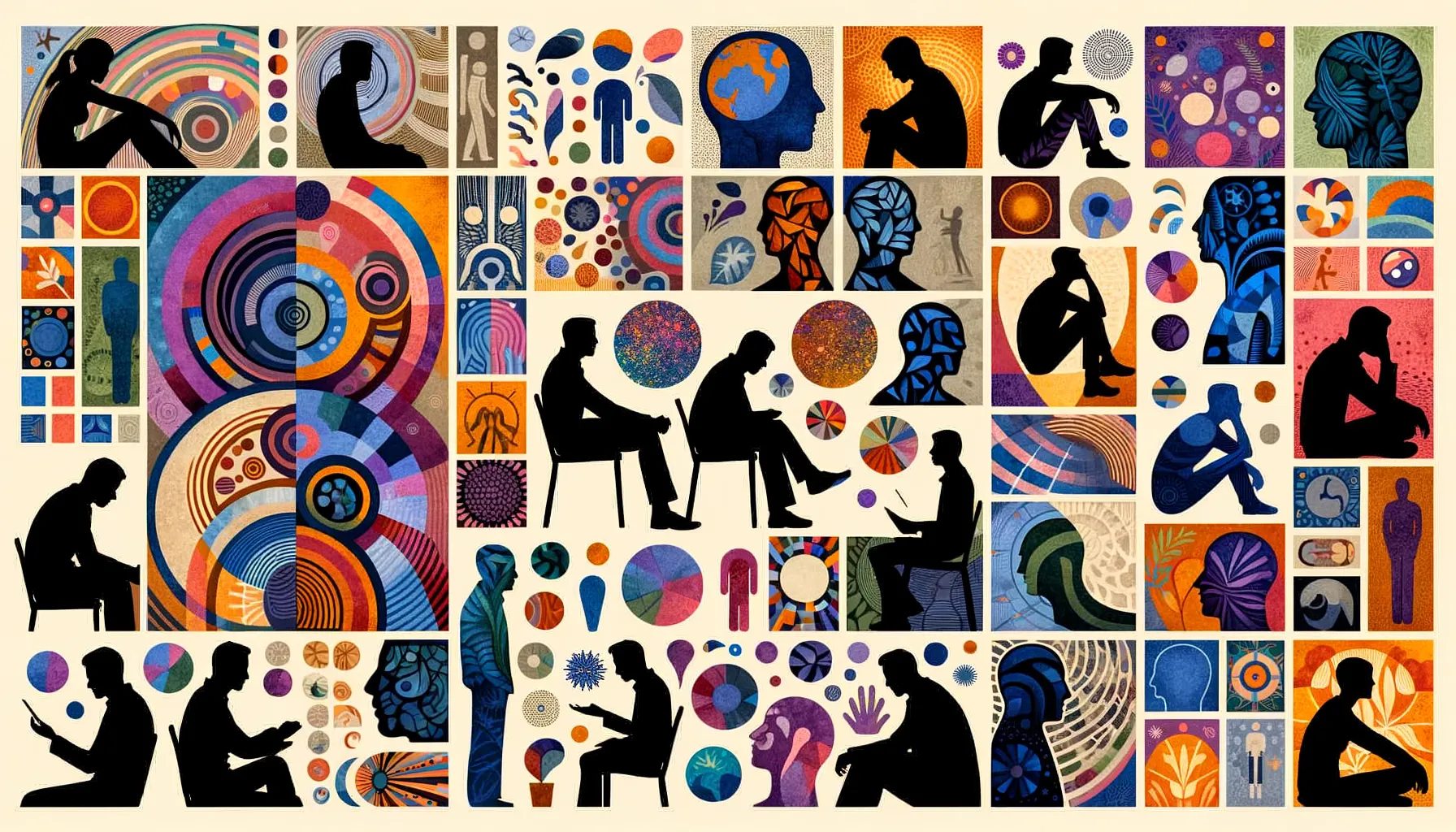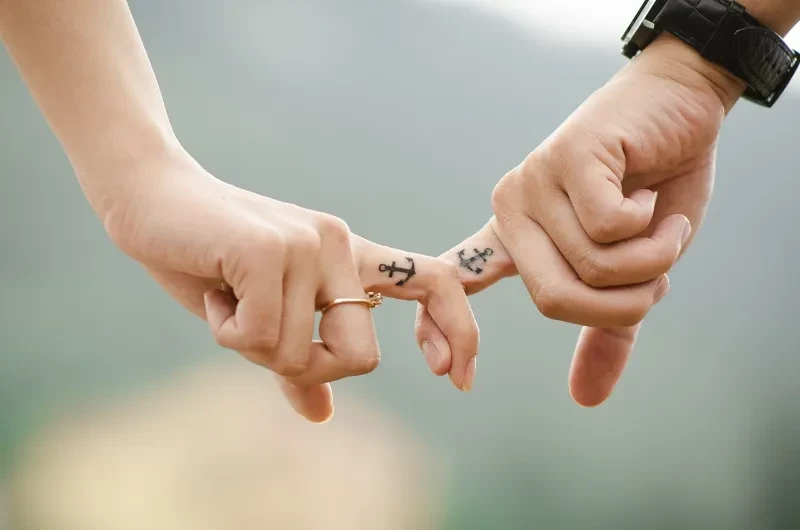- 0 Comments
- Views 41
- Recognizing the Signs of a Platonic Connection
- Understanding His Communication Patterns
- The Meaning Behind His Messages
- The Frequency of His Calls and Texts
- Analyzing His Body Language and Actions
- The Way He Touches You
- How He Acts Around You in Public
- Navigating the Friend Zone with Grace
- Accepting the Situation
- Moving Forward with Self-Respect
- Frequently Asked Questions About Being Just Friends
- What should I do if I want more than a friendship?
- How can I maintain a friendship if I have romantic feelings?
- Can a platonic friendship turn into a romantic relationship?
- How can I move on from unrequited feelings while keeping the friendship?
Recognizing the Signs of a Platonic Connection
Platonic connections are the bedrock of emotional support networks, fostering a sense of belonging and mutual understanding without the romantic undertones. They are characterized by a deep emotional intimacy that rivals that of romantic entanglements, but with the distinct absence of amorous desires. Yet, this very closeness can sometimes send mixed signals, leading one to question, “Is there something more here?”
It’s the little things—like the affectionate hug that lingers a second too long or the playful banter that seems flirtatious—that can blur the lines. When you share interests, values, and vulnerabilities, you create a tapestry of connection that can easily be mistaken for the beginnings of love. And in those moments of leaning on each other during life’s trials, the care and concern showcased can mimic the hallmarks of a romantic bond.
Yet, it’s crucial to distinguish these moments for what they are: the beautiful expressions of platonic love. As we peel back the layers of these connections, remember, clear communication is the beacon that guides us through the fog of ambiguity. Now, let’s move forward, shall we? The signs that mark a platonic relationship await your discerning eye.
- Lack of romantic attraction or desire for a romantic relationship between the individuals.
- Absence of physical intimacy, such as hugging, kissing, or holding hands with a romantic connotation.
- Comfort in open and honest communication without fear of judgment or misunderstanding.
- Deep mutual respect for one another’s boundaries, personal space, and individuality.
- Engagement in shared hobbies, interests, or activities enjoyed together, fostering camaraderie.
- Provision of emotional support and trust, creating a safe and supportive environment for both.
- No signs of jealousy or possessiveness towards each other’s interactions with other people.
- Development into a long-lasting friendship characterized by a strong bond and connection.
In essence, a platonic relationship is a rich tapestry woven from threads of mutual respect, emotional support, and a shared journey through life’s many experiences. It’s a space where romantic yearnings don’t cast a shadow, and physical intimacy is replaced by an emotional closeness that stands on its own. Recognizing these clear signs is essential in honoring the true nature of the bond.
Yet, even with these indicators laid out, the waters of human interaction remain murky at times. Communication is the anchor that can prevent us from drifting into the sea of confusion. How he communicates, the words he chooses, and the silence he upholds—each of these elements helps paint a clearer picture of where you stand. As we transition into examining his communication patterns, remember that the nuances of his language may hold the key to understanding his intentions. Are you prepared to delve into the subtleties of his words and what they truly convey? Let’s continue unraveling the threads of communication, one stitch at a time.
Understanding His Communication Patterns

Communication, the very lifeline of human connection, often reveals more than meets the eye. When it comes to how men communicate, there is a fascinating dichotomy between the camaraderie of friendship and the pursuit of a romantic interest. With friends, conversations may flow freely, punctuated by jests and shared laughter, the content often revolving around common interests or mutual acquaintances. It’s a domain of ease, where the pressure to impress is replaced by the comfort of authenticity.
In contrast, when a romantic interest takes root, his words might take on a different cadence. There’s an undercurrent of intent, a careful selection of phrases designed to enchant and woo. Compliments may be more frequent, probing questions more intimate, as he seeks to know not just your surface, but the depths of your soul. It’s this subtle shift in tone, topic, and tenderness that can signal his deeper desires.
As we wade through the nuances of his communication patterns, let’s keep in mind that words are but one piece of the puzzle. Next, we’ll explore the significance of the words left unsaid, and the messages conveyed without a sound. Are you ready to listen to the silent symphony of subtext?
Communication is an art, and love is its muse. In the dance of potential romance, every word, pause, and breath holds a meaning that can unlock the heart’s secrets.
Dr. Holt-Lunstad’s poignant words remind us that communication extends far beyond the mere exchange of words. It’s an intricate ballet, where every nuanced gesture and every pregnant pause carries its own weight in the narrative of human relationships. The artistry of communication becomes especially profound when it serves as a canvas for the subtle strokes of affection or interest.
In our quest to understand the signals of a man who may see us as just a friend, we’re not merely deciphering words but interpreting meaning. It’s the subtext—the unspoken language of the heart—that often tells the true story. Whether it’s a thoughtful pause allowing you to voice your opinion, or a change in tone when your name lights up his phone, these are the brushstrokes of his internal world being shared with you.
As we delve deeper into the significance behind his messages, keep in mind Dr. Holt-Lunstad’s insights. Each communicative exchange is an opportunity to peer into his intentions and feelings. Ready to uncover more? Let’s turn the page and explore the meaning behind his messages—the words he chooses and the ones he omits—with the eyes of a seasoned interpreter.
The Meaning Behind His Messages
Peering beneath the surface of his messages, we uncover the subtext—a language that speaks in the silence between words. The subtext is where true intentions often reside, cloaked in the cadence of casual conversation. A message saying, “Let’s hang out with the group this weekend,” may lack the exclusivity that often accompanies romantic interest. In contrast, “Can we talk? I have something on my mind,” might suggest a desire for a deeper, more personal exchange.
A man who views you as a friend may often speak in collective terms, emphasizing “we” and “us” in the context of a larger group. His words are inclusive but not intimate, his tone congenial yet comfortably distant. The subtext, therefore, lies not just in what is said, but how it’s expressed—the choice of words, the timing, the frequency—all paint a picture for those willing to look closely. Are you beginning to see the patterns? Let’s continue, as the way he reaches out can be just as telling as the words he uses.
The Frequency of His Calls and Texts
The cadence of his calls and the rhythm of his texts can be potent indicators of his mindset. When a guy sees you as just a friend, his communications may not follow the persistent drumbeat that often characterizes romantic pursuit. Instead, they arrive like gentle waves—consistent but not urgent, friendly without the undercurrent of longing that tends to accompany romance.
Consider the timing: a text sent during the laid-back hours of a Sunday afternoon carries a different implication than one in the quietude of midnight. The former suggests a comfortable, Platonic check-in; the latter might hint at a deeper, more introspective reach for connection. Frequency, too, is telling. Is he reaching out only in the context of planning group activities, or are his messages a steady stream aimed solely at you? As we examine these patterns, let’s remember that the ‘when’ and ‘how often’ can be just as revealing as the ‘what’. Ready to decode the non-verbal cues that accompany these messages?
Analyzing His Body Language and Actions
While words can be artfully selected and delivered, it’s the silent language of non-verbal cues that often tells the unadulterated truth. These silent signals—found in a glance, a gesture, the space he chooses to maintain or close—speak volumes about his true feelings and intentions. Consider the power of eye contact: a fleeting look may signify camaraderie, but a gaze that lingers can touch the realm of intimacy. It’s in these unspoken moments that a man’s perception of the relationship is often revealed.
Body language, then, becomes a critical lexicon in understanding whether he sees you as a friend or harbors potential romantic feelings. Does he lean in attentively during conversations, or does he maintain a neutral, more reserved posture? The way he navigates physical proximity can be a strong indicator of his comfort level and underlying emotions. As we unravel the threads of non-verbal communication, remember that the body often speaks the heart’s unvoiced narrative. Are you ready to interpret the ballet of body language that unfolds in the theater of interpersonal relationships?

Unspoken words echo through the canvas of our bodies, each posture and gesture a verse in the poetry of human connection. This image captures the dance of distance and proximity, where the heart’s intentions are choreographed in silence.
Interpreting the mosaic of non-verbal cues requires a discerning eye, attuned to the subtle choreography of human interaction. A man who sees you as a friend may stand with a relaxed posture, his comfort in your presence evident in the casual droop of his shoulders and the ease with which he occupies space. His gestures are open and expansive, an invitation to shared experiences, yet devoid of the charged energy that romantic interest often stirs.
Conversely, the presence of romantic intentions often manifests in a certain magnetism, a gravitational pull evident in his body language. He may subconsciously mirror your gestures, a sign of deep rapport or budding attraction. The proximity he maintains can also be a gauge: a penchant for close interactions, an occasional touch that seems to linger—these are the non-verbal whispers of a heart seeking closeness beyond the Platonic.
As we delve into the meaning behind these physical expressions, consider them pieces of a larger puzzle. Each gesture, each stance holds a clue to his inner world. Are his actions painting a picture solely of friendship, or do they hint at chapters yet unwritten? Let’s turn our attention to the nuances of touch, and how it can speak volumes in the silent language of affection.
The Way He Touches You
In the lexicon of touch, each contact has its own dialect. A high-five or playful shove, common among friends, speaks to camaraderie and shared mirth. These touches are public, casual, and devoid of intimacy. They’re the handshakes of a bond unhinged by romantic prospect.
However, when his touch transcends the boundaries of friendly gestures—when it becomes a soft graze across your back, a prolonged embrace, or a hand that rests just a moment too long on your arm—there’s a possibility that his feelings may venture beyond the platonic. Such touches, often laden with intention, are like whispers against the skin, suggesting a desire to connect on a more intimate level.
As we consider the weight of each touch, remember that context is key. Is the touch a fleeting moment in a sea of platonic gestures, or is it part of an emerging pattern that hints at deeper affection? Let’s continue our journey, as we next explore how his public demeanor may further unveil the nature of your connection.
How He Acts Around You in Public
There’s a theater to public interaction, where each act and scene can reveal the nature of a relationship. Observe him in the company of others: does he treat you as one of the group, his behavior unchanged whether he’s addressing you or another friend? This consistency is often a hallmark of Platonic familiarity, a sign that he’s comfortable but not seeking to single you out.
Yet, if you notice a transformation when you step into the public eye together—a subtle shift in his attentiveness, the way he positions himself to be near you, or how his eyes seek you out in a crowded room—these are the performances that may hint at a script that reads more than friendship. In this public dance, every gesture and glance is an overture that may speak to a deeper affection, a narrative he’s constructing one public moment at a time.
As we pull back the curtain on his public persona, we glean insights into the role you play in his life’s stage. Are you a co-star in a Platonic ensemble, or is there a spotlight waiting just for you? Let’s take our seats for the next act, where we explore the delicate art of navigating the friend zone with grace.
Navigating the Friend Zone with Grace
The ‘friend zone’ is a term often evoked in the realm of romantic misalignment, where one’s affection is not reciprocated in kind. It’s a zone defined by a Platonic rapport, despite the desires of one party for something more profound. To navigate this emotional landscape effectively, a resilient mindset is key—a blend of self-awareness and acceptance that honors both your feelings and the existing friendship.
Embarking on this journey requires emotional agility. It’s about recognizing the value in the connection you have, while also acknowledging the possibility that the romantic chapters you envision may remain unwritten. Resilience is your compass here, guiding you through potential disappointment without losing sight of the genuine bond that remains. It’s not about denial but about a dignified grace in facing the reality of the situation.
As we explore the friend zone, remember that it’s not a trap but a crossroads, offering paths to deeper self-understanding and emotional growth. How you navigate it can define not just your relationship with others, but with yourself. Ready to look at the pros and cons of trying to change the nature of your relationship from friendship to romance? Let’s consider both sides with an open heart and a clear mind.
Advantages of Pursuing Romance
- Deepened emotional connection that may lead to a more fulfilling and intimate relationship.
- Opportunity to transform a strong friendship into a potentially long-lasting romantic partnership.
- Realization of true feelings that could bring clarity and satisfaction to both individuals involved.
Challenges of Altering the Friendship
- Risk of unreciprocated feelings leading to awkwardness or discomfort in the friendship.
- Potential to damage or lose the existing friendship if romantic advances are not mutually desired.
- Emotional strain from navigating the transition and the possibility of creating imbalance in the relationship dynamic.
In the delicate dance between friendship and romance, self-respect and dignity serve as your guiding stars. They remind you that, in the pursuit of love, one must never compromise their essence or self-worth. While the heart may yearn for a romantic turn in the relationship, it’s essential to approach this transformation with a sense of integrity and poise.
Self-respect dictates that you honor your emotions and communicate them truthfully, yet without imposing expectations on the other person. Dignity lies in accepting the outcome, whatever it may be, with grace and maturity. The quest for love should augment your life, not diminish the respect you hold for yourself and the other.
Thus, as we navigate the intricate interplay of human connections, let the virtues of self-respect and dignity lead the way. They ensure that, regardless of whether the relationship evolves or remains steadfastly platonic, you emerge with an unshaken sense of self and a bond that, in its own right, is whole and valuable. As we move forward, let’s explore the art of acceptance and the emotional maturity it entails.
Accepting the Situation

Accepting a platonic relationship, when you’ve harbored more tender aspirations, is a true testament to emotional maturity. It requires the resolve to appreciate the relationship for what it is, not what it might never be. This acceptance is not a passive surrender but an active embrace of the present moment and the unique value it holds.
Emotional maturity is the quiet strength that allows you to cherish the friendship without the undercurrent of longing. It’s the grace to feel gratitude for the bond you share, and the wisdom to understand that some connections, while not romantic, are just as pivotal to our growth. By accepting the platonic nature of your relationship, you honor the authenticity of your current connection and open your heart to future possibilities that align with your desires.
Moving Forward with Self-Respect
Moving forward from the quagmire of unrequited affection, while keeping your self-respect intact, involves a proactive strategy. First, invest in self-care—nurture your passions, explore new interests, and cultivate a life rich with personal fulfillment. This creates a strong foundation of self-love and respect.
Next, reframe your perspective: view the platonic relationship as a cherished chapter in your story, not a missed opportunity. Positivity is key—remain open to the idea that every human connection has its unique purpose and beauty.
Finally, harness the lessons learned. Apply this wisdom in future relationships, allowing yourself to love boldly, yet with the discernment that comes from experience. Remember, every step forward is a step towards a future where mutual affection and respect define the bonds you form. As you turn the page, carry with you the confidence that comes from moving on with dignity and hope.
Frequently Asked Questions About Being Just Friends
What should I do if I want more than a friendship?
If you desire more than friendship, consider expressing your feelings honestly, yet sensitively. Be prepared for any outcome, and prioritize mutual respect and the existing friendship throughout the conversation.
How can I maintain a friendship if I have romantic feelings?
To maintain a friendship despite romantic feelings, set clear emotional boundaries for yourself, focus on appreciating the platonic aspects of the relationship, and actively manage your expectations.
Can a platonic friendship turn into a romantic relationship?
A platonic friendship can evolve into a romantic relationship if both parties develop mutual feelings and choose to take the friendship to a deeper level of intimacy.
How can I move on from unrequited feelings while keeping the friendship?
Moving on from unrequited feelings involves nurturing self-compassion, redirecting your emotional energy, and setting boundaries that allow the friendship to flourish in a healthy, sustainable way.







